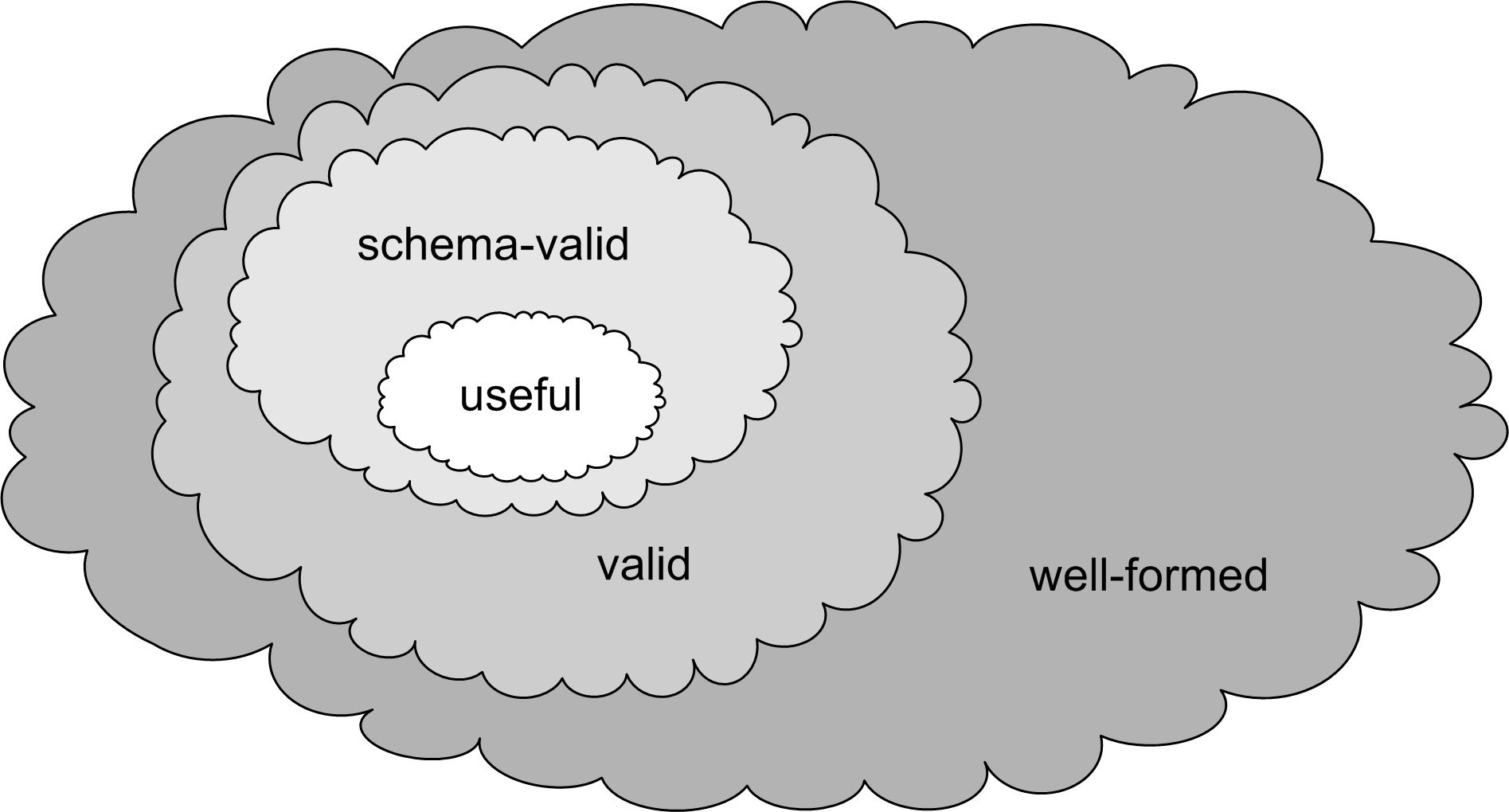string |
length, minLength, maxLength, pattern, enumeration, whiteSpace |
boolean |
pattern, whiteSpace |
float |
pattern, enumeration, whiteSpace, maxInclusive, maxExclusive, minInclusive, minExclusive |
double |
pattern, enumeration, whiteSpace, maxInclusive, maxExclusive, minInclusive, minExclusive |
decimal |
totalDigits, fractionDigits, pattern, whiteSpace, enumeration, maxInclusive, maxExclusive, minInclusive, minExclusive |
duration |
pattern, enumeration, whiteSpace, maxInclusive, maxExclusive, minInclusive, minExclusive |
dateTime |
pattern, enumeration, whiteSpace, maxInclusive, maxExclusive, minInclusive, minExclusive |
time |
pattern, enumeration, whiteSpace, maxInclusive, maxExclusive, minInclusive, minExclusive |
date |
pattern, enumeration, whiteSpace, maxInclusive, maxExclusive, minInclusive, minExclusive |
gYearMonth |
pattern, enumeration, whiteSpace, maxInclusive, maxExclusive, minInclusive, minExclusive |
gYear |
pattern, enumeration, whiteSpace, maxInclusive, maxExclusive, minInclusive, minExclusive |
gMonthDay |
pattern, enumeration, whiteSpace, maxInclusive, maxExclusive, minInclusive, minExclusive |
gDay |
pattern, enumeration, whiteSpace, maxInclusive, maxExclusive, minInclusive, minExclusive |
gMonth |
pattern, enumeration, whiteSpace, maxInclusive, maxExclusive, minInclusive, minExclusive |
hexBinary |
length, minLength, maxLength, pattern, enumeration, whiteSpace |
base64Binary |
length, minLength, maxLength, pattern, enumeration, whiteSpace |
anyURI |
length, minLength, maxLength, pattern, enumeration, whiteSpace |
QName |
length, minLength, maxLength, pattern, enumeration, whiteSpace |
NOTATION |
length, minLength, maxLength, pattern, enumeration, whiteSpace |
![]() [http://creativecommons.org/licenses/by/3.0/]
[http://creativecommons.org/licenses/by/3.0/]

